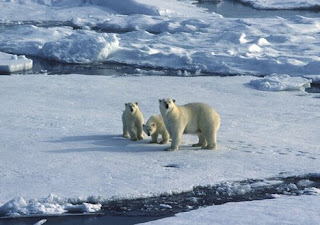Climate Change: A Burning Issue
 Climate Change: A Burning Issue
Climate Change: A Burning Issue
Introduction:
Climate Change can be defined as the fluctuation in regular pattern of rainfall season, air pressure and core temperature of the earth. Nowadays, environmental problems are being increasingly rapidly due to climate change and so it needs to be discussed. With the rapid growth in industrialization and production of green house gases (Carbon dioxide, Methane, Nitrous Oxide etc) natural pattern of climate change has largely been affected. This means that anthropogenic activities have increased the emission of green house gases (GHGs) in the atmosphere. The GHGs in the atmosphere trap the heat and raise air temperatures near the ground, acting like a green house on the surface of the planet. Rise in temperature has greatly impacted the planet. Earth- the life supports system. Besides these, climate change has resulted in the irregular growth and extinction of plant species and the wild animals especially the Snow Leopard living in the snowy area or in high mountain region are in a condition of threat. Birds have started laying eggs earlier than usual due to climate change.
Climate Change in Nepal:
Nepal participated in the climate change business right from the Convention preparation process in 1991. Nepal signed the Convention on 12 June, 1992 during the UN Conference on ENVIRONMENT AND DEVELOPMENT at Rio de Janeiro, Brazil. The instrument of ratification was submitted to the Convention Depository on 2 May, 1994 and the UNFCCC has entered into force in Nepal on 31 July 1994 as per the Convention provision. Similarly, Nepal submitted the instrument of accession to the Kyoto Protocol to its depository on 16 September, 2005. In order to expedite CDM projects, and get benefits from them, the Government of Nepal (GoN) has made the Ministry of Environment (MoE) responsible to function as the Designated National Authority(DNA) on 22 December 2005.
Nepal is very much susceptible to climate change. Although Nepal shares less than 0.025 percent of the global GHGs emission, it is already witnessing the visible effects of climate such as accelerated snow and glacier melting thereby increasing in the size of glacier lakes that might increase GLOF(Glacier Lake Outburst Floods). The ‘Tso Rolpa’ is an excellent example of increasing size in the Nepal Himalaya. Climate change induced impacts are also noticed in rainfall variation, and forests and biodiversity. Landslides, floods and unexpected droughts are increasing which might have a direct bearing on human health and food security. The number of cold days and cold nights are decreasing or number of hot days and hot nights are increasing. Impacts of climate change in the Himalayas would have multi-fold and unimaginable effects in the downstream thereby requiring additional efforts to lessen the impacts of climate change of both at the origin and the downstream. Nepal Himalayas are the major sources of fresh water not only for Nepal but also for South Asia. Global warming affected Himalayas resulting in retreat of glaciers of which over 20 are very vulnerable.
Predictions indicate that Nepal’s rivers will enjoy increased water flow by 2030 and suffer from reduced flow by the end of 21st century. It is considered that snow melting will increase water flow up to a certain period after which it might gradually decrease which might be attributed, ‘inter alia’, to snow formation process. In this context it is natural to think that international community should have additional understanding on natural linkages, interrelationship and interdependencies between the mountains and the lowlands.
Opportunities:
As the impacts of the climate changes are inevitable, adaptation would be the area of prime concerns for Nepal. Being the most vulnerable mountainous countries and greatly affected by the impacts of climate change, collaborative efforts are expected to provide ample opportunities for sustainable economic development and sustained management of natural resources in Nepal. The climate change regime, if implemented in “good faith” in accordance with the provision, inter alia would contribute a lot in building capacity, ensuring financial flows and technology transfer, and implementing a number of adaptation activities and promoting carbon sinks, and also promoting clean energy development path or expand low emission economy in the country. Nepal is affected and will continue to be affected by the poison although it has not taken it. Hence, Nepal leads to take them as opportunities and should make every effort to benefits from climate change regime. This might be one of the areas for financial flows for socio-economic development of the country.


0 Response to "Climate Change: A Burning Issue"
Post a Comment